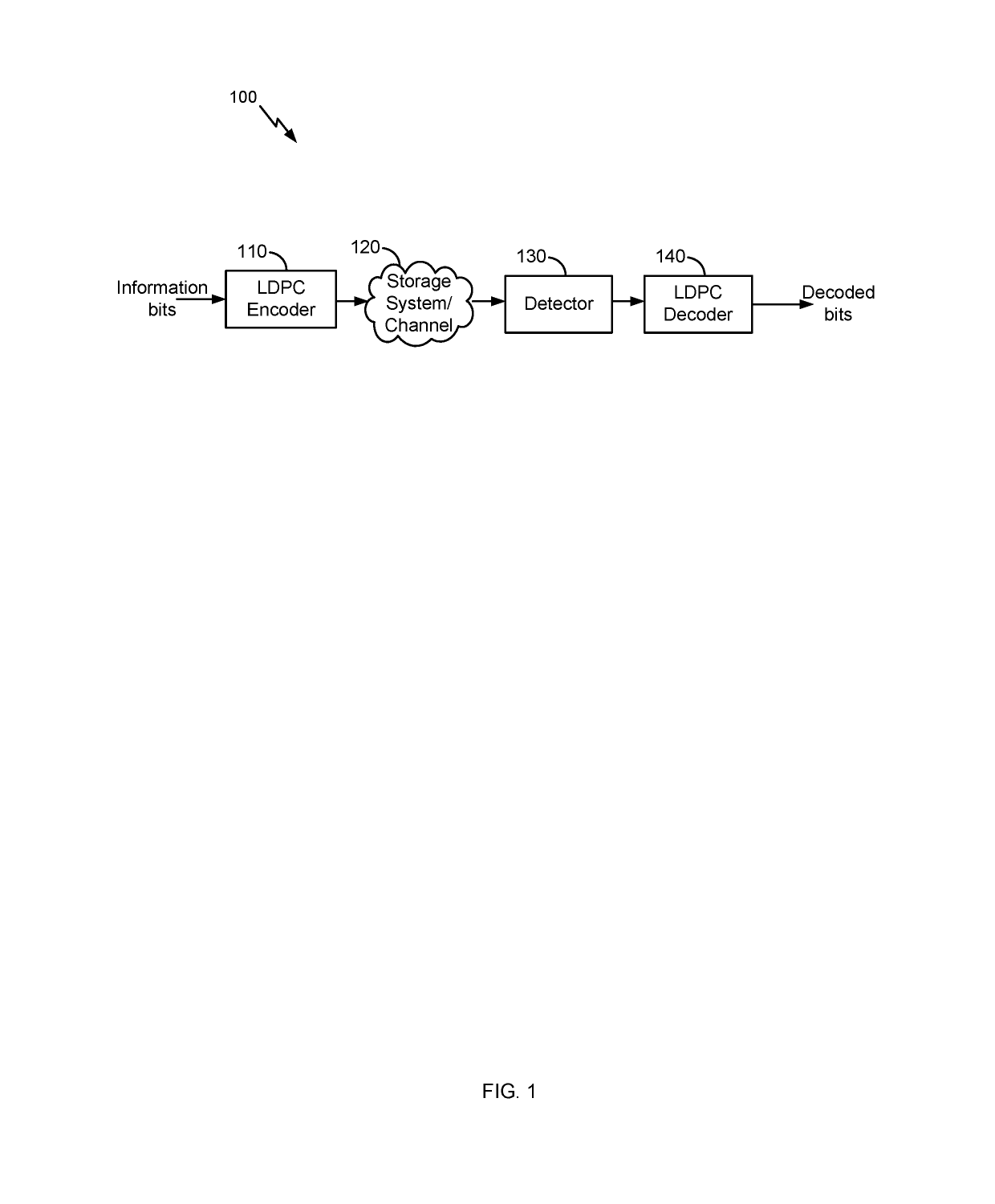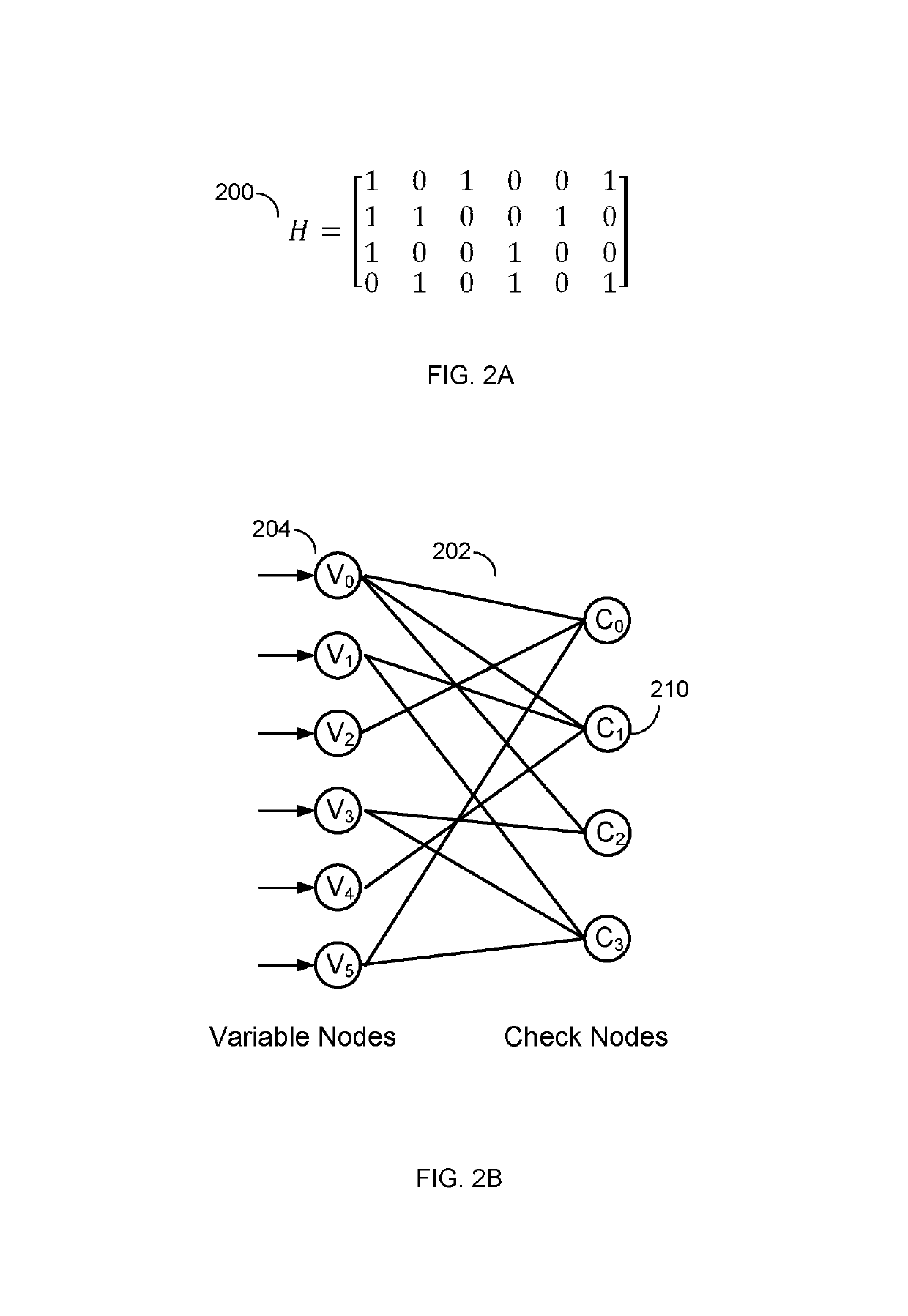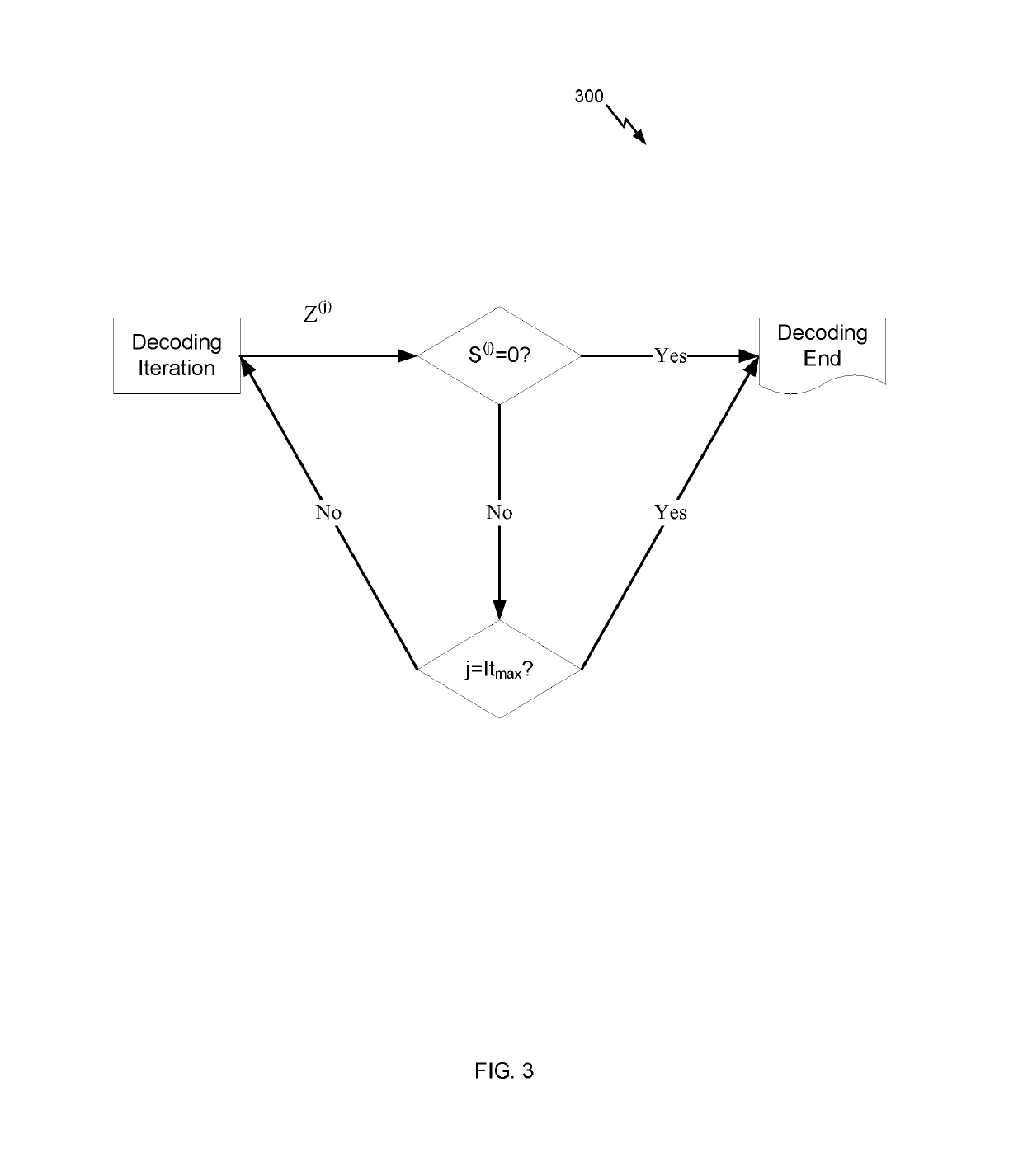Early termination of low-density parity-check (LDPC) decoding
a low-density parity and decoding technology, applied in the field of early termination of low-density parity decoding, can solve the problems of increasing the number of performed iterations, consuming time and processing burden, and existing iterative decoding processes of ldpc codes may not be able to meet the desired latency and/or processing performance, etc., to achieve the effect of improving the latency or processing performance of an error correction system
- Summary
- Abstract
- Description
- Claims
- Application Information
AI Technical Summary
Benefits of technology
Problems solved by technology
Method used
Image
Examples
Embodiment Construction
[0018]Generally, LDPC decoding uses an iterative decoding process. The iterative decoding process ends based on two parameters. First, if a syndrome of a decoded codeword is zero, the iterative decoding for that codeword is terminated. The syndrome is zero when all errors, if any were existent, have been corrected by the LDPC decoder. Second, if the syndrome is not zero, but the number of iterations reaches a maximum number, the iterative decoding ends. This scenario occurs when the iterative decoding does not correct all the errors. Under this scenario, the iterative decoding is repeated until the maximum number of iterations regardless of information that the non-zero syndrome may reveal. Because the iterative decoding is “blindly” repeated until the maximum number of iterations, its overall latency and processing performance directly depends on this maximum number. The larger the maximum number is, the worse the latency and processing burden can become.
[0019]To improve the latenc...
PUM
 Login to View More
Login to View More Abstract
Description
Claims
Application Information
 Login to View More
Login to View More - R&D
- Intellectual Property
- Life Sciences
- Materials
- Tech Scout
- Unparalleled Data Quality
- Higher Quality Content
- 60% Fewer Hallucinations
Browse by: Latest US Patents, China's latest patents, Technical Efficacy Thesaurus, Application Domain, Technology Topic, Popular Technical Reports.
© 2025 PatSnap. All rights reserved.Legal|Privacy policy|Modern Slavery Act Transparency Statement|Sitemap|About US| Contact US: help@patsnap.com



